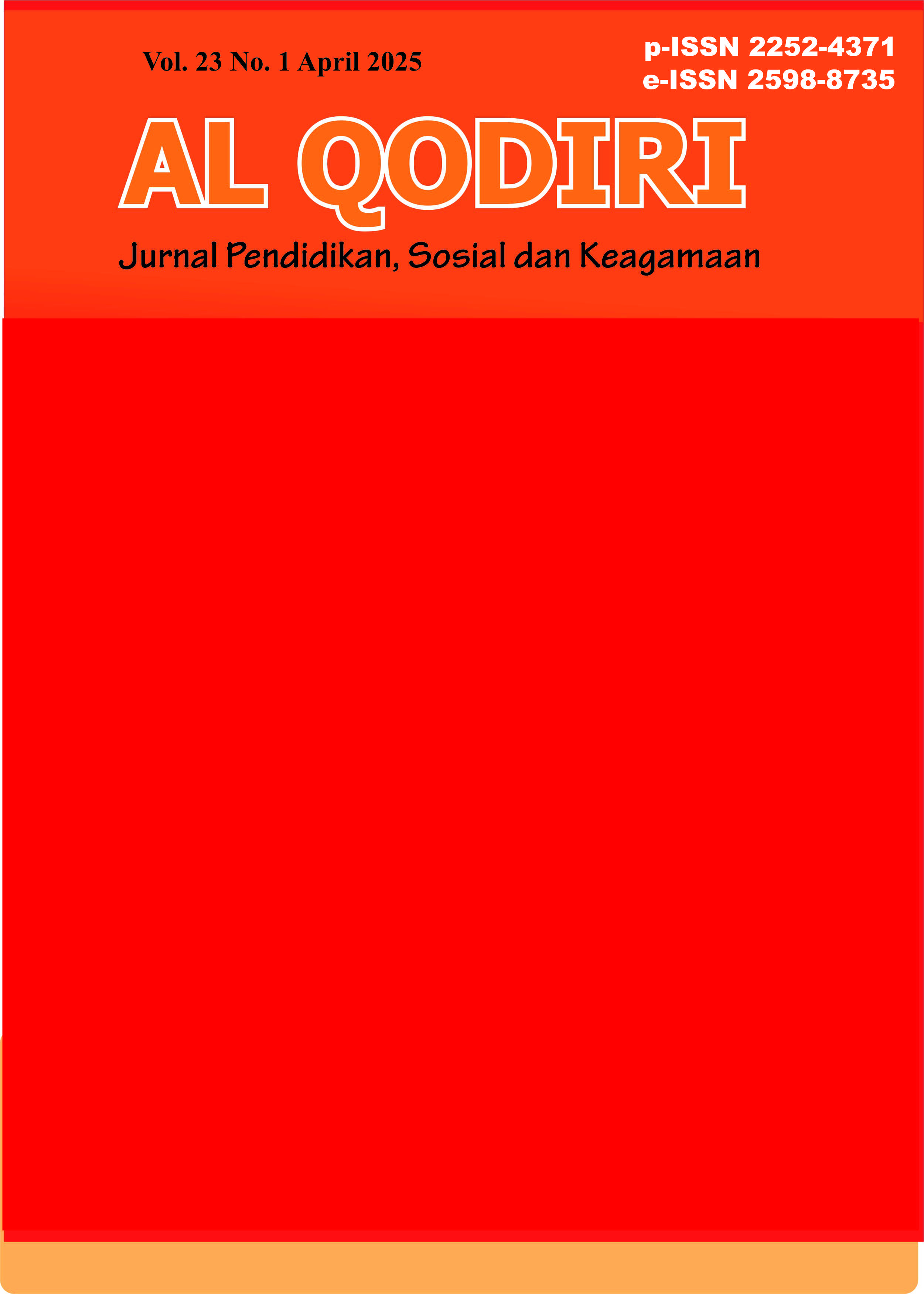Pengaruh Pembelajaran Problem Based Learning Dan Motivasi Siswa Terhadap Hasil Belajar PAI Di SMP Plus Al-Qodiri Jember
Abstract
This article comes from the results of research that aims to determine: 1) the influence of learning methods on Islamic Religious Education learning outcomes; 2) the influence of learning motivation on Islamic Religious Education learning outcomes; 3) the influence of interaction between learning methods and students' learning motivation on Islamic Religious Education learning outcomes; 4) the influence of students who use the Problem Based Learning (PBL) method with students who use the lecture method on Islamic Religious Education learning outcomes; 5) the influence of students who have high motivation is higher than students who have low motivation on Islamic Religious Education learning outcomes. The research method used is a quantitative method using a factorial design model, namely 2 x 2, then this study uses two groups, namely the experimental group and the control group or comparison group, the sample of this study was 36 students of SMP Plus Al-Qodiri for the experimental class or using the Problem Based Learning (PBL) method and 36 students for the control class or using the lecture method. The final data processing results obtained an average value of the experimental group of 83.28 with a standard deviation of 6,055 and a variance of 36,663, while the average learning outcome using the lecture method was 75.92 with a standard deviation of 5,500 and a variance of 30,250. The highest score of PAI learning outcomes using the Problem Based Learning (PBL) learning method is 94 and the lowest score is 71 while the highest score in the class using the lecture method is 86 and the lowest is 66. The average score of learning motivation using the Problem Based Learning (PBL) method is 102.44 with a standard deviation of 9,330 and a variance of 87,054 while the average score of learning motivation using the lecture method is 102.33 with a standard deviation of 7,830 and a variance of 61,314 the highest score in the class learning using the Problem Based Learning (PBL) method is 127 and the lowest is 87 while the highest score in the control class learning using the lecture method is 121 and the lowest is 91 This shows that learning motivation using the Problem Based Learning (PBL) learning method is better when compared to student learning motivation using the lecture method. Keywords: Problem Based Learning (PBL) Method; Motivation and Learning Outcomes.
Published
2025-04-23
How to Cite
Muhamad Ansori, & Nur Candra Eka Setiawan. (2025). Pengaruh Pembelajaran Problem Based Learning Dan Motivasi Siswa Terhadap Hasil Belajar PAI Di SMP Plus Al-Qodiri Jember. Al Qodiri : Jurnal Pendidikan, Sosial Dan Keagamaan, 23(1), 112-137. https://doi.org/10.53515/qodiri.2025.23.1.112-137
Section
Articles
Copyright (c) 2025 Muhamad Ansori, Nur Candra Eka Setiawan

This work is licensed under a Creative Commons Attribution-ShareAlike 4.0 International License.
